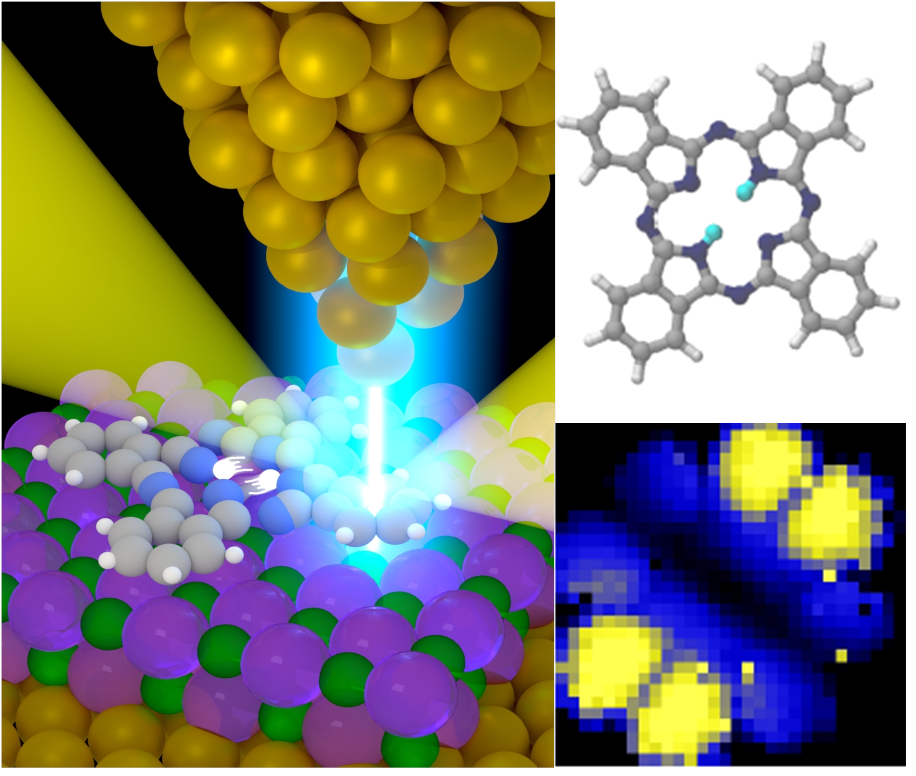Atomic-scale dissection of molecular flashes
Molecules are perceived as the ultimate compound for future electronic and optoelectronic devices of extremely low dimension. In such a molecular circuit, each molecule can hold specific functionalities such as carrying electronic current, emitting photons, or switching on and off a signal. By developing an ultra-resolved nanoscopy technique, a joint collaboration between our group and a research team in Strasbourg has discovered and dissected fluctuating light bursts in a conventional molecule and traced the origin of these fluctuations to the fast motion of a pair of hydrogen atoms forth and back within the molecular switch. Such an optical access to the dynamics of molecular switches working as sophisticated nanostrobes can open a new way to engineer fast optical communications in organic circuitry.
Single-molecule devices have attracted a tremendous interest fuelled by the objective of transforming a fundamental research topic into a new and powerful technology. Due to their intrinsic quantum nature, molecules open up functionalities that go beyond today’s electronics. Among these perspectives, the concept of single molecule optoelectronics, which consists in combining optical and electronic properties within a single molecule, is only emerging. In a wish list of molecular optoelectronics, it is envisioned that light could be used to convey information at high frequency between well-separated molecular components of a nano-scale circuit. Now, this objective is closer, thanks to researchers at IPCMS of Strasbourg, that have implemented a nanoscopic technique that allows distinguishing the exact origin of light flashes inside a prototypical molecular optoelectronic component with atomic-scale precision. Together with theoretician colleagues from the Center for Materials Physics (CSIC-UPV/EHU) in San Sebastian, they could associate the successive flashes to the switching of hydrogen atoms between two positions of the molecule, occurring about 1000 times per second, in a mechanism known as tautomerization. This result provides new information on this reaction, and shows that a molecule may be used as an intermittent emitter, or molecular nanostrobe, potentially controllable, and relevant for optical communications at the nano-scale.
The sharp metallic tip of a scanning tunneling microscope is used in this work as an optical nanoantenna capable, simultaneously, of confining light to sub-molecular volumes and to excite a single-molecule with electrons. Located on top of a free-base phthalocyanine, a prototypical single-molecule switch, this nanoantenna was capable of amplifying the intensity of the molecular flashes by several orders of magnitude. By moving the antenna with respect to the molecule, the researchers were able to record a map of the flash (see figure) with unprecedented atomic resolution. More importantly, they not only identified the origin of the emitted light but related its blinking to the motion of the hydrogen atoms within the molecule.
The next step for the researchers will be to find a method to manipulate the “on” and “off” state of this molecular strobe to use it as a controllable molecular–scale light emitting switch, thus turning the dream of molecular optoelectronics into a closer reality. This work is published in Nature Nanotechnology on January 20th, 2020.


